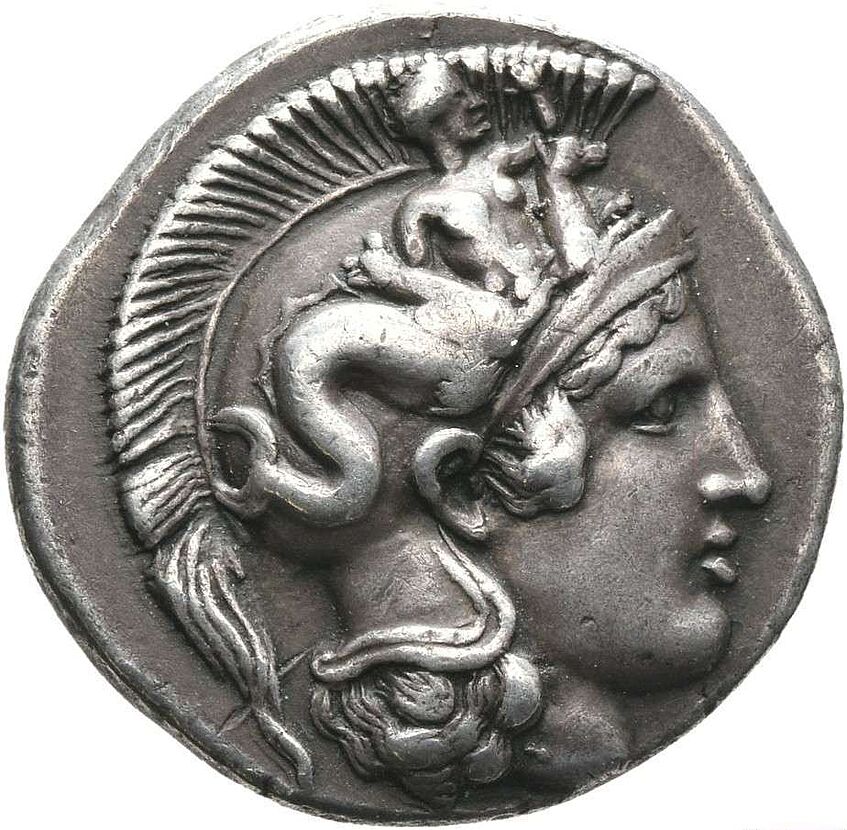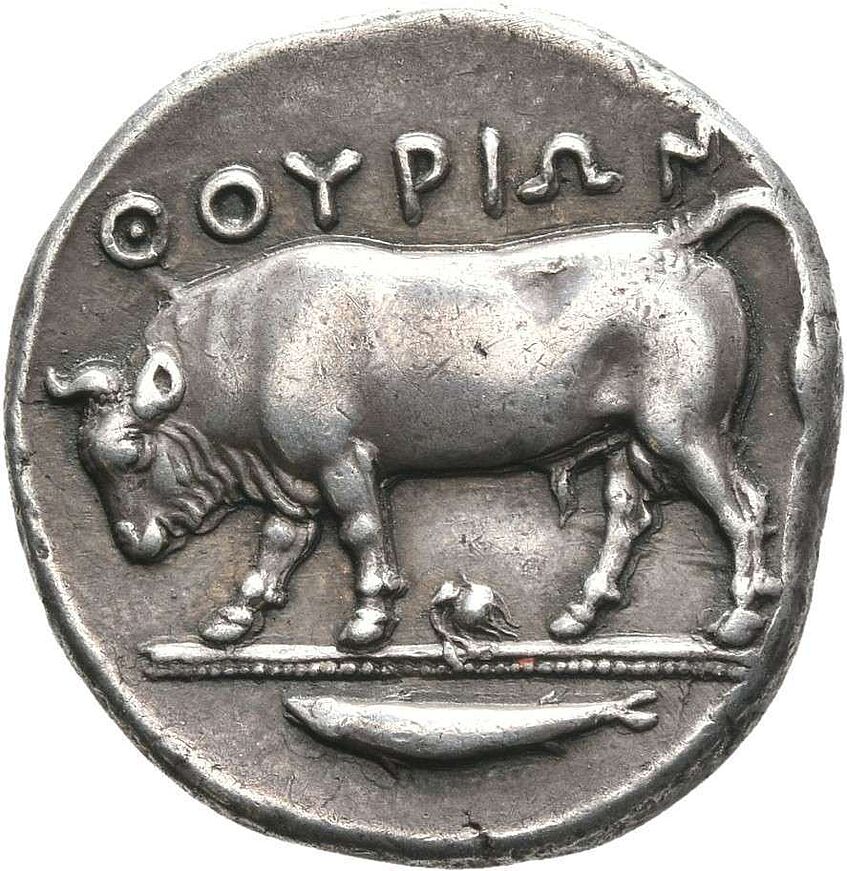The Coinage of Thurium and its Contexts – Die study and (Historical and Economic) Evaluation
Stater, 7,83 g, 10h
Martin von Wagner-Museum der Universität Würzburg, Ka 1068 = H 6435
The Coinage of Thurium and its Contexts – Die study and (Historical and Economic) Evaluation
Supported by the Austrian Science Fund (FWF) - project number 33344
Thurium is one of the most important Greek colonies in Magna Graecia, both for its connections to other cities and innovative coinage. However, the current arrangement and knowledge of Thurian coins has not yet reached a level that is comparable to other cities of similar importance. This oversight has repercussions on the understanding of the politics and economy of Magna Graecia.
The coinage of Thurium will be studied and arranged in the form of a modern die-study. From this point on, the rhythm and quantification of coin production are going to be connected with the city’s history. Furthermore, the project investigates how the coins of the polis of Thurium were connected to the history of Magna Graecia in the Classical and Hellenistic period.
For the first part of this project, i.e. the die-study, the Department of Numismatics and Monetary History already contains an extensive amount of preparatory material, which makes a project of this extent possible in the first place: c. 4,000 photographs of Thurian coins, arranged in a preliminary catalog, were entrusted to the department by Michael Metlich. Building on this work, the following objectives are going to be tackled:
(1) control and supplementation of the numismatic material
(2) Preparation of a die-study and of a relative and absolute chronology by using numismatic (overstrikes, hoards, etc.) and historical methods.
(3) Interpretation of the Thurian coin types between identity, economy and artistic influences; evaluation of the adoptions of these types in Italy and beyond.
(4) Analysis of the mint administration, rhythm of coin production and quantification.
(5) Comparison and interpretation of the circulation of Thurian coins in southern Italy, Sicily and beyond; analysis of the circulation in Thurium and comparison with other cities in southern Italy.
(6) Historical and economic evaluation of the coin finds.
Not only the catalog on the coins of Thurium will fulfill a desideratum for numismatists: by contextualizing the numismatic material with written and other material sources, the project will also set within the confines of Magna Graecia a new standard of using coins for historio-economic analyses.
Univ.-Prof. Dr. Reinhard Wolters
Dr. Marc Philipp Wahl, M.A.
Student research assistants:
Vanessa Zumtobel, B.A.
former:
Nikolaus Aue, B.A.
David Burisch, M.A.
Jan-Hendrik Giering, B.A.



